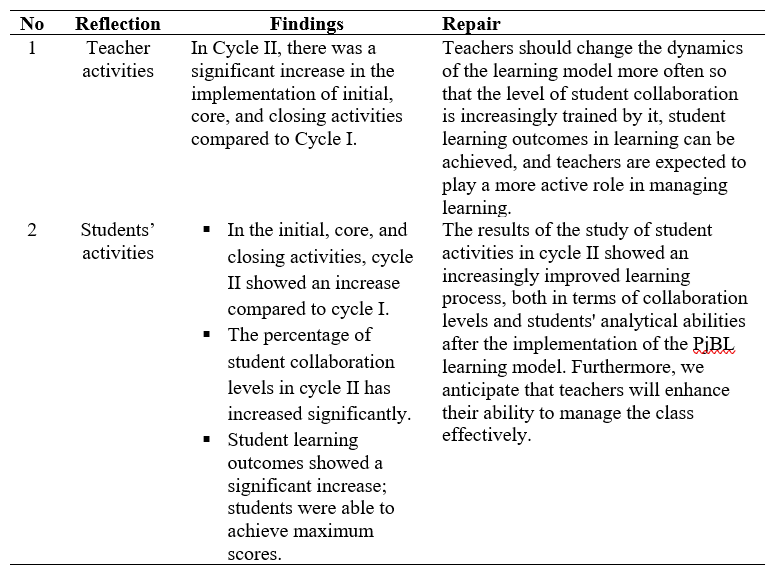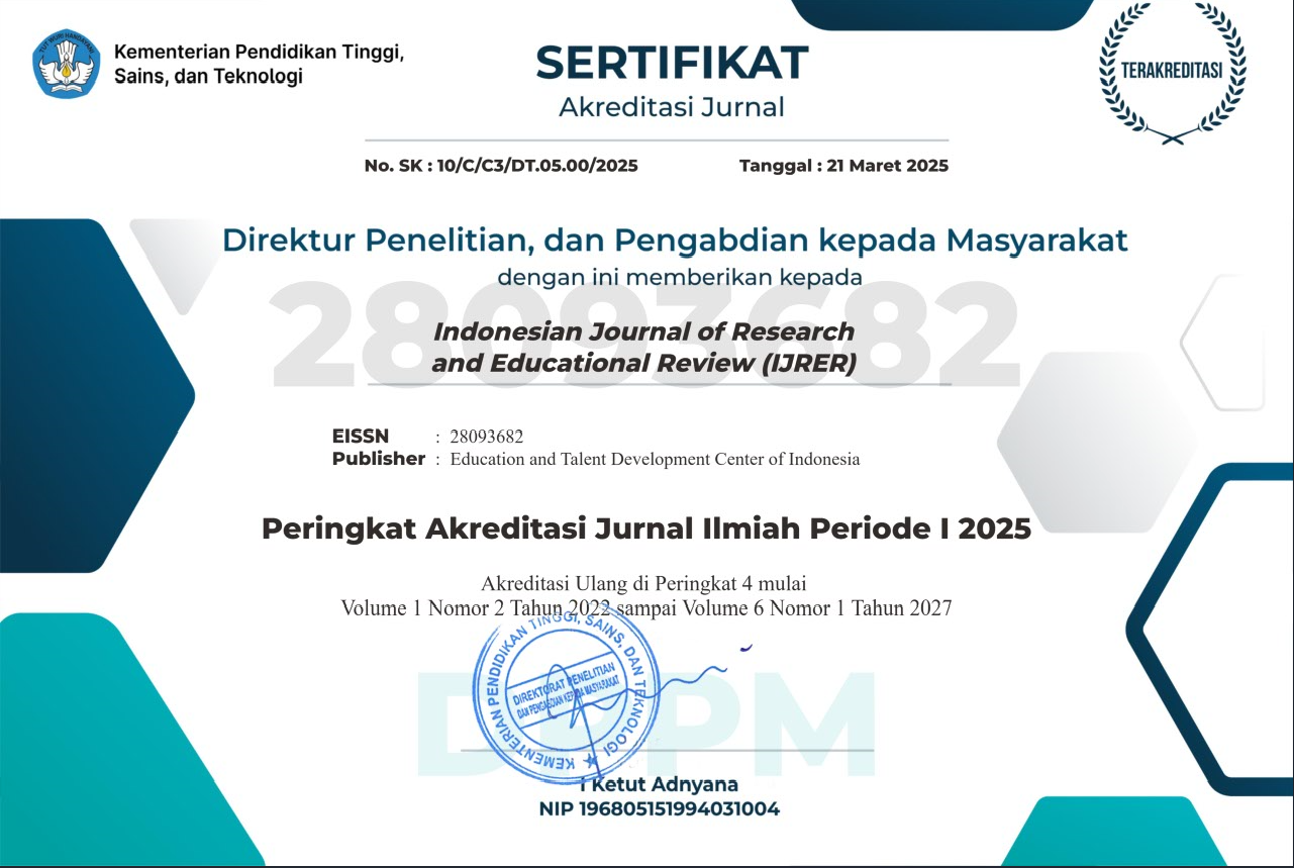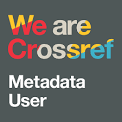Implementation of the Project Based-Learning Model in Dance Learning: A Study of Collaboration of Middle School Students
DOI:
https://doi.org/10.51574/ijrer.v4i1.2717Keywords:
Dance Learning, Learning Model, Middle School Students, Project Based-LearningAbstract
This study aims to measure the level of student collaboration and the effectiveness of the use of the project-based learning (PjBL) model with junior high school students.The study implements the Classroom Action Research method in two cycles, using a qualitative and quantitative approach. Each cycle includes the planning, implementation, observation, and reflection stages. The subjects of the study consisted of 29 students of class VIII.9 and the subject teacher of Arts and Culture (Dance) at public middle school 27 Makassar. The focus of the study is the application of the PjBL model to increase student collaboration in learning arts and culture (dance). Data collection techniques include observation, interviews, field notes, tests, and documentation. Data were analyzed using qualitative and quantitative analysis techniques. The results of the study showed an increase in student collaboration skills during the two learning cycles. In Cycle I, the teacher's activity sheet in teaching using the PjBL model obtained an average score of 66.6 (sufficient category), while in Cycle II it increased to 92 (very good category). Student learning activities also increased, from an average score of 60 (sufficient category) in Cycle I to 85.45 (good category) in Cycle II. The level of student collaboration increased from an average value of 68.62 (sufficient category) in Cycle I to 89.72 (very good category) in Cycle II.
References
Aifan, H. (2022). Implementing a project-based collaborative learning approach using PowerPoint to improve students’ 21st-century skills. E-Learning and Digital Media, 19(3), 258-273.
Almulla, M. A. (2020). The effectiveness of the project-based learning (PBL) approach as a way to engage students in learning. Sage Open, 10(3), 2158244020938702.
Anazifa, R. D., & Djukri, D. (2017). Project-based learning and problem-based learning: Are they effective to improve student’s thinking skills?. Jurnal Pendidikan IPA Indonesia, 6(2), 346-355.
Biasutti, M., & Habe, K. (2021). Dance improvisation and motor creativity in children: Teachers’ conceptions. Creativity Research Journal, 33(1), 47-62.
Bloomberg, L. D. (2021). Designing and delivering effective online instruction: How to engage adult learners. Teachers College Press.
Borowski, T. G. (2023). How dance promotes the development of social and emotional competence. Arts Education Policy Review, 124(3), 157-170.
Chen, C. H., & Yang, Y. C. (2019). Revisiting the effects of project-based learning on students’ academic achievement: A meta-analysis investigating moderators. Educational Research Review, 26, 71-81.
Chung, C. C., Huang, S. L., Cheng, Y. M., & Lou, S. J. (2020). Using an iSTEAM project-based learning model for technology senior high school students: Design, development, and evaluation. International Journal of Technology and Design Education, 1-37.
Devereaux, C. (2017). Educator perceptions of dance/movement therapy in the special education classroom. Body, Movement and Dance in Psychotherapy, 12(1), 50-65.
Gabuardi, V. M. F. (2021). Project-Based Learning: boosting 21st century skills. Revista estudios, (43), 340-419.
Gaunt, H., & Treacy, D. S. (2020). Ensemble practices in the arts: A reflective matrix to enhance team work and collaborative learning in higher education. Arts and humanities in higher education, 19(4), 419-444.
Ghosheh Wahbeh, D., Najjar, E. A., Sartawi, A. F., Abuzant, M., & Daher, W. (2021). The role of project-based language learning in developing students’ life skills. Sustainability, 13(12), 6518.
Fadila, D., Suryana, Y., & Giyartini, R. (2019). Penerapan Model Project Based Learning Untuk Meningkatkan Kreativitas Gerak Tari Siswa Melalui Kegiatan Ekstrakurikuler Seni Tari. Indonesian Journal of Primary Education, 3(1), 9.
Hasbi, M., & Fitri. (2023). Pre-Service Teachers with Courses in Problem-Based Learning in Mathematics. ETDC: Indonesian Journal of Research and Educational Review, 2(2), 51-60.
Huddy, A. (2017). Digital technology in the tertiary dance technique studio: expanding student engagement through collaborative and co-creative experiences. Research in Dance Education, 18(2), 174-189.
Hussein, B. (2021). Addressing collaboration challenges in project-based learning: The student’s perspective. Education Sciences, 11(8), 434.
Kassing, G., Jay-Kirschenbaum, D., & Jay, D. M. (2021). Dance teaching methods and curriculum design: comprehensive K-12 dance education. Human Kinetics Publishers.
Lakkala, S., Galkienė, A., Navaitienė, J., Cierpiałowska, T., Tomecek, S., & Uusiautti, S. (2021). Teachers supporting students in collaborative ways—An analysis of collaborative work creating supportive learning environments for every student in a school: Cases from Austria, Finland, Lithuania, and Poland. Sustainability, 13(5), 2804.
Li, M. M., & Tu, C. C. (2024). Developing a Project-Based Learning Course Model Combined with the Think–Pair–Share Strategy to Enhance Creative Thinking Skills in Education Students. Education Sciences, 14(3), 233.
Mughni, R. M., & Sari, E. F. (2024). The Influence of The Project Based Learning (PJBL) Learning Model Assisted by Videoscribe Media on The Creativity of Learning Dance Arts. Jurnal Penelitian Pendidikan IPA, 10(12), 10793-10798.
Mutanga, M. B. (2024). Students’ Perspectives and Experiences in Project-Based Learning: A Qualitative Study. Trends in Higher Education, 3(4), 903-911.
Pratiwi, G. T. O. D., Masunah, J., & Nugraheni, T. (2019). Creation Dance Learning through Project Based Learning to Build Students Characters. In International Conference on Arts and Design Education (ICADE 2018) (pp. 162-164). Atlantis Press.
Richardson, C., & Mishra, P. (2018). Learning environments that support student creativity: Developing the SCALE. Thinking skills and creativity, 27, 45-54.
Susilowibowo, J., & Hardini, H. T. (2019). Effectiveness of project-based learning models to improve learning outcomes and learning activities of students in innovative learning. KnE Social Sciences, 82-95.
Toikka, T., & Tarnanen, M. (2024). Understanding teachers’ mental models of collaboration to enhance the learning community. Educational Studies, 50(6), 1114-1131.
Vogler, J. S., Thompson, P., Davis, D. W., Mayfield, B. E., Finley, P. M., & Yasseri, D. (2018). The hard work of soft skills: augmenting the project-based learning experience with interdisciplinary teamwork. Instructional Science, 46, 457-488.
Winther, H. (2018). Dancing days with young people: An art-based coproduced research film on embodied leadership, creativity, and innovative education. International Journal of Qualitative Methods, 17(1), 1609406918789330.
Zhang, R. (2022). Design of an authentic project-based learning course using project management approach. International Journal of Fashion Design, Technology and Education, 15(1), 57-66.

Downloads
Published
How to Cite
Issue
Section
License
Copyright (c) 2025 ETDC: Indonesian Journal of Research and Educational Review

This work is licensed under a Creative Commons Attribution-ShareAlike 4.0 International License.









1.png)













